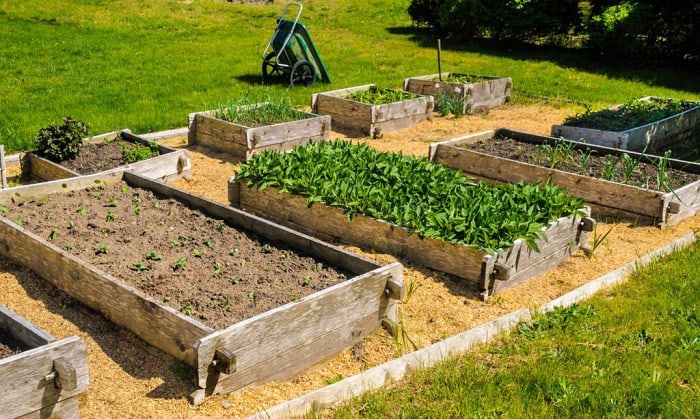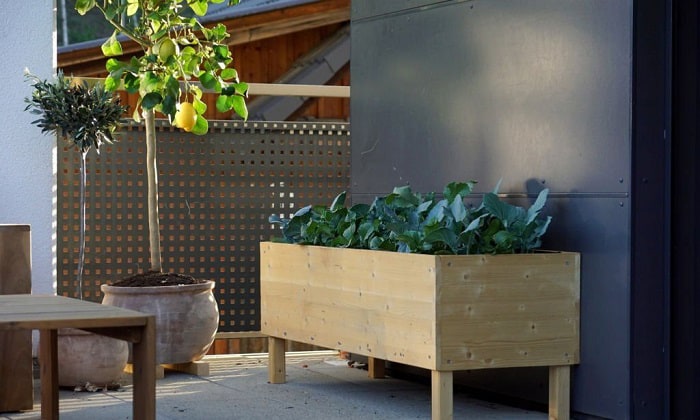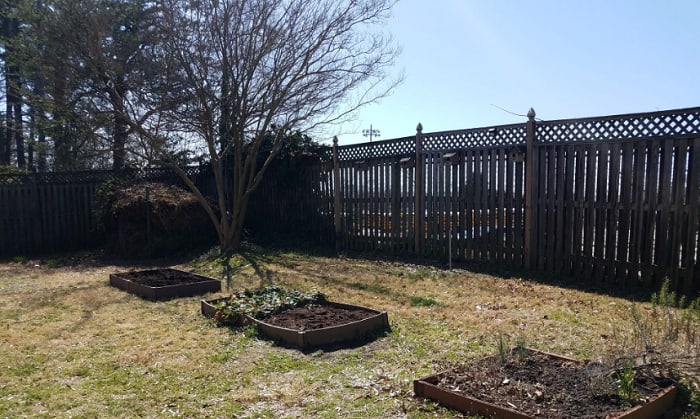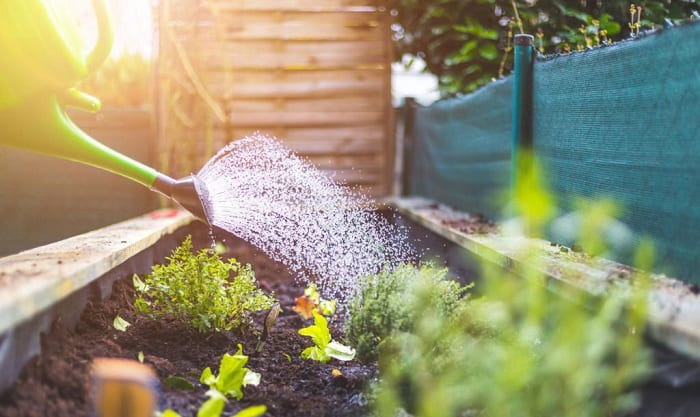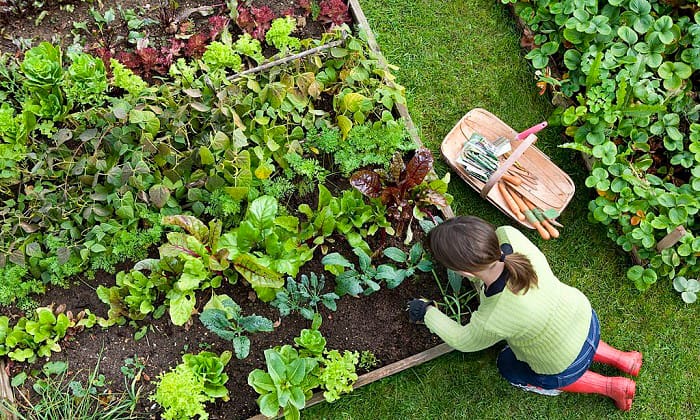Raised garden beds help plants grow in regions where the soil is too sandy or alkaline. But to take advantage of these structures, there’s one question you must answer: “How deep should a raised garden bed be?”
Generally, the best height for garden beds must be 8 to 12 inches. However, some plants will do well with lower or higher measurements (6 inches or 18-36 inches). Discover more info about garden beds below.
Table of Contents
Raised Garden Bed Dimensions
1. Depth
How deep to make raised beds? The answer depends on the type of plants you want to grow. As you will see, more vertical clearance is necessary for tomatoes and other plants with long roots. Meanwhile, a low to medium depth would do for strawberries and other species.
Check out the raised garden bed height for some typical flora below.
- 6-8 inches: lettuce greens, mint, oregano, basil, parsley, and other herbs
- 12-18 inches: broccoli, celery, cabbage, bok choy, strawberries, potatoes, garlic, corn, arugula, onions, spinach
- 18-24 inches: beets, carrots, kale, squash, cucumber, peas, turnips, chard
- 24-36 inches: okra, watermelon, pumpkins, asparagus, parsnips, tomatoes, artichokes
It’s vital that you follow the above recommendations because if the bed is too shallow, there will be less nutrition for vegetation, and drainage will be compromised.
Aside from the plant type, some other factors affect how tall a garden bed should be:
- Gardeners with wheelchairs should have 24-inch deep beds at a minimum.
- Don’t make the height less than 36 inches if you have knee or hip problems. This is especially important if your yard is big and there’s a lot of fertilizing and harvesting to be done.
- After the plant, soil, and everything else are put in the bed, there should still be space for 2 to 3 inches of mulch.
- The deeper the garden bed is, the more soil you will need to buy. The soil amount is essential in considering the cost of your horticulture project.
For example, a 6-feet long, 4-feet wide, 18-inches deep bed will require 36 cubic feet of soil. Meanwhile, a bed with the same length and width but with a 12-inch depth will need 24 cubic feet of soil.
Hence, it is more economical to go with the lower limits of the required heights mentioned above.
That said, a more extensive soil depth for raised beds will help plants retain moisture better, minimizing the amount of work necessary in caring for them.
- If the garden beds are put on hard surfaces, the ideal depth is 2 feet.
- Local laws may restrict the height of your plant boxes, especially when your garden is near roads.
2. Width and Length
Aside from the depth of raised garden bed, the width is also important. Make the bed 3 feet wide so your hands can reach both sides of it easily. At most, 4 feet is the limit of how big you should go.
Also, there is no restriction in terms of the length of garden beds. You can build 4 feet or even 20 feet-long boxes, whatever suits your preferences.
Spacing Between Beds
Another thing to consider is the distance between your plant boxes. In general, leave at least 1.4 feet or 45 cm of free space between your plant boxes.
You don’t want them to be too close together; there should be enough space for walking and moving gardening tools such as shovels, fertilizers, and soil.
This makes tending to your plants more manageable, and people won’t be tempted to step on the garden beds while walking.
Other Things to Keep in Mind When Building a Garden Box
- Position the plants somewhere with adequate sunlight and no strong winds. Long beds should run north to south.
- Research the heights of your plants to arrange them correctly. Plants with the same heights should be grouped so that taller shoots don’t prevent shorter ones from receiving sunlight. Taller and heavier plants also need to be secured with stakes or trellises so they don’t fall.
- You can buy ready-made garden beds from stores like Home Depot and Amazon or build them yourself. If you pick the DIY route, use unpainted wood that’s not pressure-treated. Stones, bricks, and cement are also usable materials. Whatever you choose, make sure the box is rot-resistant.
- If the bed is over 12 inches in height and 6 feet in length, cross support is necessary to handle the weight of the soil. Similar to the garden bed, you can buy the cross support or make it using wood or aluminum.
- Drain holes should be made near the bottom of the plant box. Take a look at this article to know what should you put on the bottom of a raised garden bed.
- Before setting up the garden bed, gardeners should dig the soil that will hold the plants to check for rocks and anything that will block plant roots. It is called double digging.
- Double digging will also help determine if the soil pH needs adjustment, so people can create the optimal environment for vegetation to thrive.
- Deep raised beds should have the right components to make the soil nutritious. At the beds’ bottom, you can put straw, leaves, and cardboard to create compost. The ideal composition is 30% compost and 10% potting soil, with the rest being topsoil.
- Vegetables should be given a water-soluble fertilizer once a month. Other times for fertilizing are the start of the planting and midseason.
- Remove weeds from the garden before you build a raised bed and whenever they pop up (often during springtime).
Pros and Cons of Raised Garden Beds
1. Pros
- Raised garden beds are suitable for pretty much all types of plants. You can use them for cucumbers, raspberries, rhododendrons, and more.
- They’re easy to water, and their soil temperature can be raised easily.
- Weeds are less likely to thrive here, and pests such as gophers and moles can be isolated easily using hardware cloth and chicken wire.
- Raised beds are neater than in-ground ones. You can put raised beds in various places, from your balcony, driveway, to rooftop.
2. Cons
- Raised garden beds are expensive, with the average kit costing around $145. If the placement area for them is sloping, you’ll likely need a professional constructor to adjust the ground angle.
- If you hire people to work on the garden bed itself, prepare an even higher budget. Labor rates for carpenters go from around $40 to $90 an hour. Moreover, pathway installation will cost up to $22 a square foot.
- Raised garden beds will eventually need replacement, and they’re not very recyclable for the eco-conscious.
- If you install these structures permanently, they will be very challenging to move, something you should keep in mind if you change houses or travel frequently.
- Though raised beds look beautiful no matter the size, they’re not as diverse in terms of shapes as in-ground gardens. You will be limited to square or rectangular boxes in most cases.
Conclusion
By now, you should know the answer to “how deep should a raised garden bed be?”. No matter which plants you want to grow, it’s important to consider the dimensions of your veggie or flower box.
Also, I highly recommend for you some tips and tricks about the raised garden bed, such as
- 5 cheapest ways to fill a raised bed
- Raised garden beds vs in-ground beds (detailed comparison)
- Quick steps to edge a garden bed
Do you have any experience in building or using raised beds? Please share any thoughts on this topic with us if you have them. Thank you for reading!

Hi, I am William – Floridayards’ digital content creator. My job is to find answers to all your concerns with thorough research and our team’s expert advice. I will also bring you honest reviews on the best products and equipment for raising your beautiful garden. Please look forward to our work!


